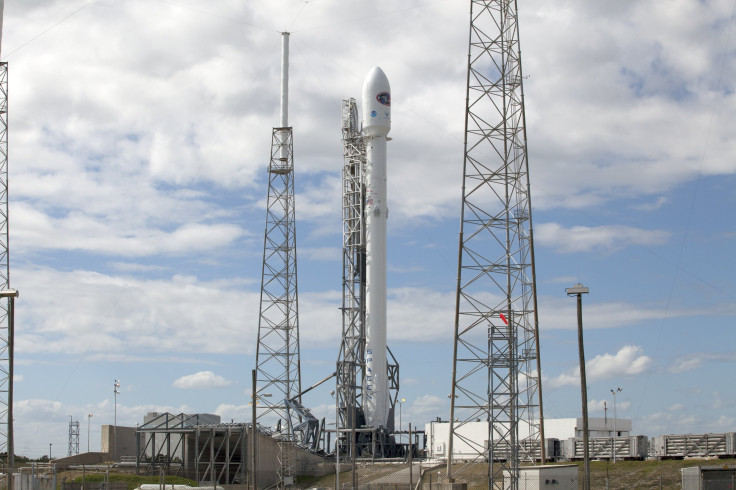NASA DSCOVR Launch Live Stream: Watch SpaceX Second Attempt To Land A Rocket Here

SpaceX and NASA will attempt to launch the Deep Space Climate Observatory (DSCOVR) Tuesday. The solar wind satellite launch was scrubbed on Sunday after the Air Force’s Eastern Range radar was lost. The launch is scheduled for 6:05 p.m. EST and the NASA live stream begins at 5 p.m. EST.
The National Oceanic and Atmospheric Administration's DSCOVR satellite will be used to monitor solar wind and improve the agency's space weather observations. The satellite will be placed at L1 Lagrangian point, located 930,000 miles from Earth. Lagrangian points are areas where the gravitational pull of the Earth and the sun cancel out, creating a perfect balance. The location is also outside of Earth's influence, which allows DSCOVR to study solar wind particles without interference.
NOAA will use the solar wind satellite for space weather observations, and NASA has several instruments aboard the spacecraft that will be used to conduct Earth science, including a camera and radiometer for atmosphere and climate science observations.
The Earth is constantly bombarded by solar particles, but they can't penetrate the planet's atmosphere and they're not a threat to humans on the surface. The particles could affect satellites, the International Space Station and communication networks. A solar flare could send a massive burst of solar particles toward Earth causing radio blackouts that could last for several minutes. If a Coronal Mass Ejection (CME) -- a blast of charged plasma -- associated with a solar flare hit Earth, the results could be catastrophic. A massive CME that just missed Earth in 2012 could have caused trillions of dollars in damage if it had hit.
After DSCOVR is launched, all eyes will be on the Falcon 9 rocket's return to Earth. SpaceX attempted to land a rocket in January following its fifth commercial resupply mission to the International Space Station. The Falcon 9 rocket hit the target in a hard landing, causing it to explode, and SpaceX hopes for a softer landing in its second attempt.
Rocket reentry will be much tougher this time around due to deep space mission. Almost 2X force and 4X heat. Plenty of hydraulic fluid tho.
— Elon Musk (@elonmusk) February 8, 2015The Dragon spacecraft launched in January by SpaceX will return to Earth on Tuesday. Dragon was loaded with cargo and completed science investigations. The spacecraft will be released from the space station at 2:09 p.m. EST and NASA's live coverage will begin at 1:45 p.m. EST.
The NASA DSCOVR launch live stream can be viewed below.
© Copyright IBTimes 2024. All rights reserved.






















